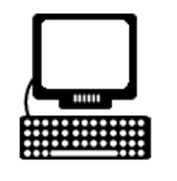Team:Imperial College London/Drylab
From 2009.igem.org
(Difference between revisions)
(→80pxDry Lab Hub) |
(→80pxDry Lab Hub) |
||
| Line 4: | Line 4: | ||
The goal of the Dry Lab has been to support the Wet Lab by answering questions of interest. | The goal of the Dry Lab has been to support the Wet Lab by answering questions of interest. | ||
| - | Conclusions from the models aim to provide the team with a functional understanding of the system as well as design considerations that should be addressed in the genetic constructs. | + | Conclusions from the models aim to provide the team with a functional understanding of the system as well as design considerations that should be addressed in the genetic constructs.We have implemented several models, explaining the behaviour of different parts of the system. Below is a summary of the models: |
| - | + | *<b>Autoinduction:</b> | |
| - | + | **This section is responsible for switching on the encapsulation process when glucose in the medium is used up by the cell culture. | |
| - | + | ** The goal of the model is to quantify this switch point from a primary to a secondary carbon source and provide an understanding of the diauxie phenomenon. | |
| + | *<b>Protein Production:</b> | ||
| + | ** | ||
| + | ** | ||
| + | *<b>Drug Kinetics:</b> | ||
| + | ** | ||
| + | ** | ||
| + | *<b>Genomoe Deletion:</b> | ||
| + | ** | ||
| + | ** | ||
Modelling in this project has been important in defining the "Engineering constraints" of the project, and in particular, we have focused in quantifiying the [https://2009.igem.org/Team:Imperial_College_London/Temporal_Control temporal control] aspects of our system. This page provides an overview of the models we have implemented. | Modelling in this project has been important in defining the "Engineering constraints" of the project, and in particular, we have focused in quantifiying the [https://2009.igem.org/Team:Imperial_College_London/Temporal_Control temporal control] aspects of our system. This page provides an overview of the models we have implemented. | ||
Revision as of 12:48, 17 October 2009

 Dry Lab Hub
Dry Lab Hub
Welcome to the Dry Lab!
The goal of the Dry Lab has been to support the Wet Lab by answering questions of interest. Conclusions from the models aim to provide the team with a functional understanding of the system as well as design considerations that should be addressed in the genetic constructs.We have implemented several models, explaining the behaviour of different parts of the system. Below is a summary of the models:
- Autoinduction:
- This section is responsible for switching on the encapsulation process when glucose in the medium is used up by the cell culture.
- The goal of the model is to quantify this switch point from a primary to a secondary carbon source and provide an understanding of the diauxie phenomenon.
- Protein Production:
- Drug Kinetics:
- Genomoe Deletion:
Modelling in this project has been important in defining the "Engineering constraints" of the project, and in particular, we have focused in quantifiying the temporal control aspects of our system. This page provides an overview of the models we have implemented.


Click on the links to find out more!




 "
"



